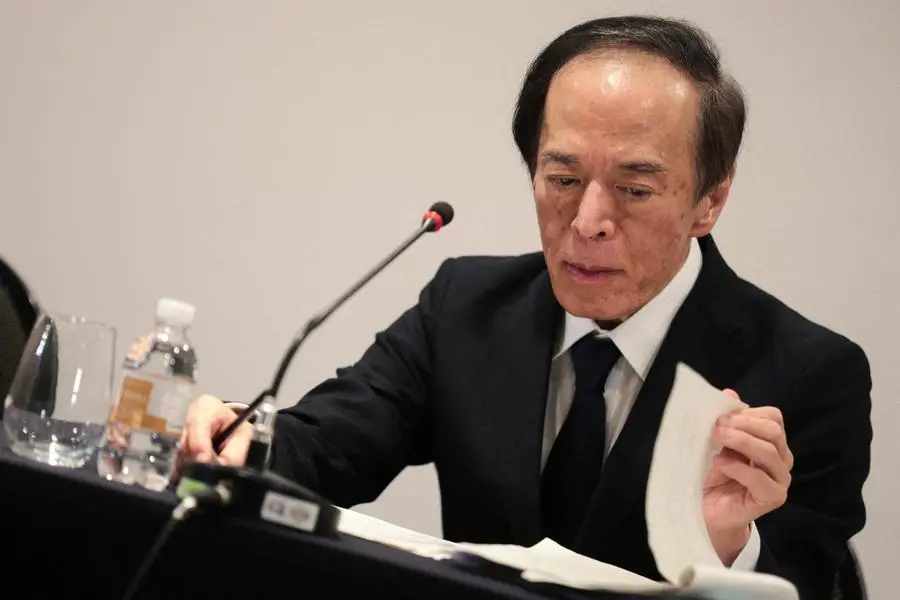PHOTO
SAO PAULO - The G20 finance leaders' upbeat take on the global economic outlook will likely give Bank of Japan Governor Kazuo Ueda further impetus to proceed with the bank's carefully telegraphed plan to exit negative interest rates as early as this month.
The chance of a hard landing in the global economy has been seen by BOJ policymakers as a key risk that could force them to delay an exit from a decades-long massive stimulus programme.
While finance ministers and central bank chiefs of the G20 major nations failed to produce a joint statement, a summary by chair Brazil said the likelihood of a global soft landing has increased as inflation recedes in most economies.
In a briefing after attending the G20 gathering in Sao Paulo on Thursday, Ueda said a soft-landing scenario for global and U.S. economies is becoming the baseline view of policymakers.
"That's roughly in line with projections made in our January quarterly report. The take-away from this meeting was that we were able to confirm our view seems to be right," he said.
Ueda stopped short of concluding that inflation is set to sustainably hit 2%. But he stuck to his view the economy was on track for a moderate recovery, despite recent data showing Japan slipped into a recession at the end of last year.
Earlier in Japan on Thursday, BOJ board member Hajime Takata said Japan was already seeing prospects for sustainably achieving 2% inflation, triggering a rise in the yen and bond yields on expectations of a sooner-than-expected exit.
"The impression I get is that the BOJ is steadily moving towards an exit from negative rates," said Toru Suehiro, chief economist at Daiwa Securities. "The BOJ probably already has government consent to do so."
WAGE TALKS IN SPOTLIGHT
The hawkish signals from the BOJ are part of a communication strategy to prepare markets for an end to a complex stimulus package that consisted of a negative short-term interest rate, a bond yield cap and huge asset purchases.
Over 80% of economists expect the BOJ to end negative rates in April, according to a Reuters poll taken on Feb. 15-20, with some betting on the chance of action in March.
Laying the theoretical groundwork for an exit, the BOJ on Monday released a research note that highlighted recent changes seen in Japan's wage-inflation dynamics.
Prices of services most sensitive to labour costs, such as hair-dressing salons and English lesson fees, are creeping up in a sign Japan is gradually emerging from a prolonged period of stagnant wage and price growth, the research note said.
Broader inflation is also holding up even as cost-push pressures from past rises in raw material costs dissipate. A core index stripping away the effect of volatile fresh foods hit 2% in January, exceeding market forecasts of 1.8%.
The next key event, flagged by Ueda, that will determine the timing of an exit comes on March 13, when big companies and unions conclude their annual wage talks that set pay for 2025.
A strong outcome may give the BOJ justification to pull the trigger at its policy meeting on March 18-19, some analysts say.
Former BOJ official Nobuyasu Atago expects big firms to offer wage hikes exceeding 4% including hefty rises in base pay, which would be sufficient to keep inflation durably at 2%.
"A wage hike exceeding 4% would give a pretty strong impression to markets and prod the BOJ to contemplate an exit from negative rates," said Atago, currently chief economist at Rakuten Securities Economic Research Institute.
"There's a good chance the BOJ could move in March."
(Reporting by Leika Kihara; Editing by Chizu Nomiyama)





















